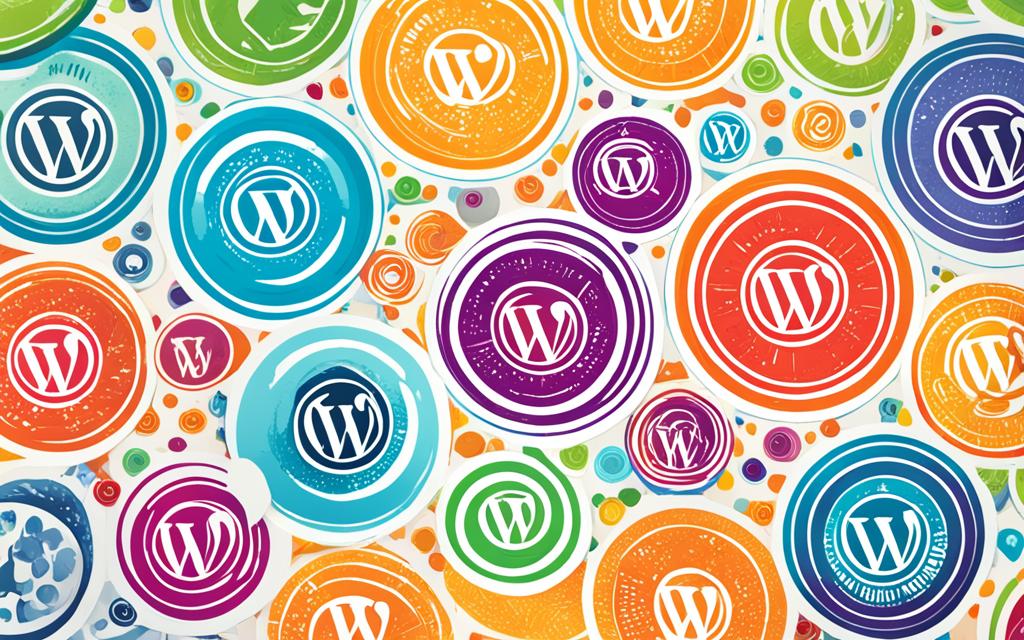Understanding WordPress Tags: A Guide
Welcome to our comprehensive guide on WordPress tags and how they can optimize your website’s content for search engine recognition. In this article, we will explain what tags are in WordPress, how they differ from categories, and provide tips on adding and maximizing WordPress tags for enhanced SEO.
WordPress tags are keywords that you assign to your posts or pages to highlight specific concepts or details. They serve as a way to connect multiple pieces of content that share similar information, making it easier for users to find related articles and improving overall visitor engagement.
Unlike meta tags, which describe the site itself, WordPress tags are applied directly within the content editor of your WordPress website. Simply navigate to the “Posts” section in your admin dashboard, and you can easily add tags to your individual posts or pages. It’s important to focus on relevance and value when adding tags, rather than simply adding a high volume of tags. Duplicating or using unrelated tags can dilute the effectiveness of your tagging strategy.
WordPress also provides a convenient option for displaying a tag cloud block. This feature showcases the most frequently used tags on your posts, allowing visitors to explore related topics and improving site navigation. By leveraging this tag cloud block, you can further maximize the SEO benefits of your WordPress tags.
In the following sections, we will delve deeper into the details of WordPress tags, discussing their purpose, how they differ from categories, and strategies for maximizing their SEO impact. Let’s get started!
What are WordPress Tags?
WordPress tags serve the purpose of highlighting specific concepts or details on a page or post, similar to keywords. They allow users to quickly find related content and enable search engines to recognize the relevance of the content. Tags are typically displayed alongside or under the post, and clicking on a tag takes visitors to a list of all posts on your site that share the same tag. By using tags effectively, you can enhance user engagement and improve your overall SEO. WordPress also offers a tag cloud block, which lists the most frequently used tags on your posts and helps visitors explore related topics.
WordPress Tags vs Categories
WordPress tags and categories are essential tools for organizing your content and improving website navigation. While they serve similar purposes, there are distinct differences between tags and categories that contribute to effective content organization.
Categories act as broader classifications, allowing you to group related posts together. They help in content management and provide a structured framework for organizing your website. Think of categories as the main sections or topics of your site. It is important to note that every WordPress post must be assigned to at least one category to prevent it from being filed under “uncategorized.”
On the other hand, tags focus on specific aspects of the content itself. They function as keywords, highlighting concepts or details that span across multiple posts. Tags are used to create connections between different pieces of content based on similar information or themes. By using tags effectively, you can enhance user engagement and provide more relevant content recommendations.
Categories can be styled in a way that resembles tags, allowing you to maintain a consistent visual style throughout your website. This can further improve the user experience by providing a uniform look and feel across different sections of your site.
One notable difference between tags and categories is the hierarchical order. Categories can be organized in a hierarchical structure, with parent categories and child categories. This allows for a more specific classification of content. For example, a parent category could be “Technology” with child categories such as “Mobile Devices” and “Gadgets.” On the other hand, tags do not have a parent/child structure. They are applied to posts regardless of their category, allowing for more flexibility in content classification.
Both tags and categories are valuable for improving content organization and site navigation. However, their relevance to posts may vary. Categories provide a broader context for content, while tags offer a more specific focus. By utilizing both tags and categories effectively, you can create a cohesive and comprehensive content organization system that enhances user experience and boosts SEO.
| WordPress Tags | WordPress Categories |
|---|---|
| Focus on specific aspects of content | Group related posts together |
| Keywords that highlight concepts | Broader classifications for content management |
| Applied to posts regardless of category | Must be assigned to posts to prevent “uncategorized” |
| Provide flexibility in content classification | Can be organized hierarchically with parent/child structure |
| Enhance user engagement and content recommendations | Maintain a consistent visual style throughout the site |
Maximizing WordPress Tags SEO
When it comes to improving your website’s search engine optimization (SEO), WordPress tags can play a crucial role. While they may not directly impact your site’s rankings, they contribute to SEO in an indirect manner. The key to maximizing the SEO benefits of WordPress tags lies in their relevance.
Tag relevance is essential for achieving higher rankings in search engine results. By using tags that are closely related to your content, you help search engines understand the context and relevance of your site. This, in turn, increases the chances of your site appearing in relevant searches.
To make the most out of WordPress tags, it is important to have a clear tag strategy. Focus on quality over quantity, ensuring that the tags you use provide contextual value to your content. Avoid the temptation to add excessive tags that don’t directly contribute to the user experience or SEO.
WordPress also offers a helpful feature called the tag cloud block. This feature allows you to display the most frequently used tags on your website, giving visitors a visual representation of the main themes and topics. The tag cloud block not only enhances the user experience but also helps search engines understand the overall content of your site.
Additionally, proper website indexing and management of duplicate content are crucial elements to consider when utilizing WordPress tags. Make sure your website is effectively indexed by search engines to ensure optimal visibility. Furthermore, be mindful of duplicate content issues that can arise from using tags. Avoid using duplicate tags across multiple posts, as this can negatively impact your site’s SEO performance.
FAQ
What is a tag in WordPress?
WordPress tags are keywords that highlight specific concepts or details on a page or post. They optimize content for search engines and help users easily discover related content.
How do WordPress tags optimize my content?
WordPress tags make your content easily discoverable by users and recognized by search engines. They connect multiple pieces of content with similar information and improve visitor engagement and overall SEO.
What is the difference between WordPress tags and categories?
WordPress tags and categories both help organize your content. Categories are broader classifications for content management, while tags focus on specific aspects of the content itself.
How do I add tags in WordPress?
You can add tags in WordPress by simply editing your post and applying relevant tags within the content editor. This can be done from the “Posts” section of your admin dashboard.
How can I maximize the SEO benefits of WordPress tags?
To maximize SEO benefits, focus on using tags that are relevant and valuable to your content. Avoid duplicating or using unrelated tags. WordPress also offers a tag cloud block that can help enhance SEO by showcasing frequently used tags.














